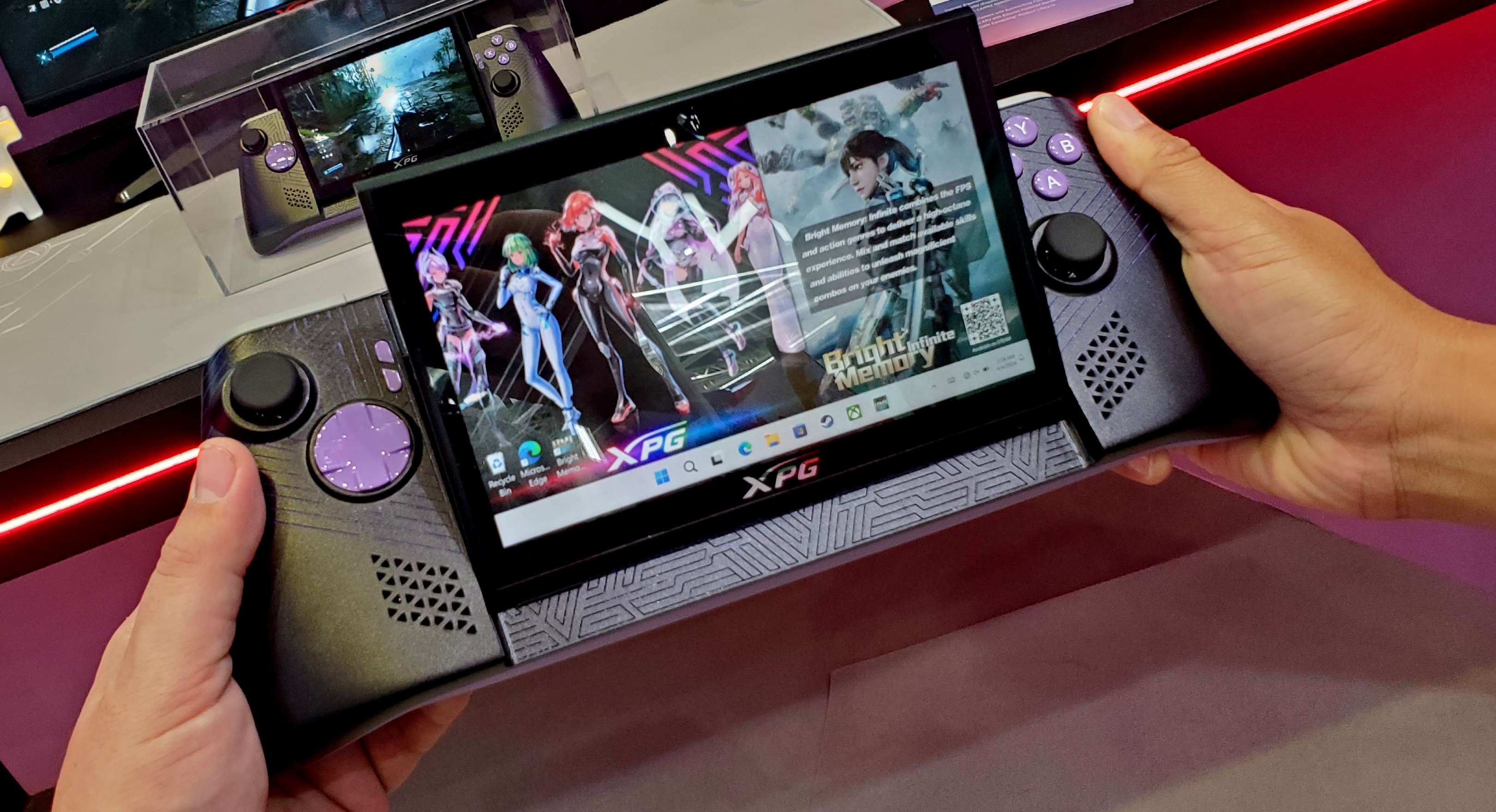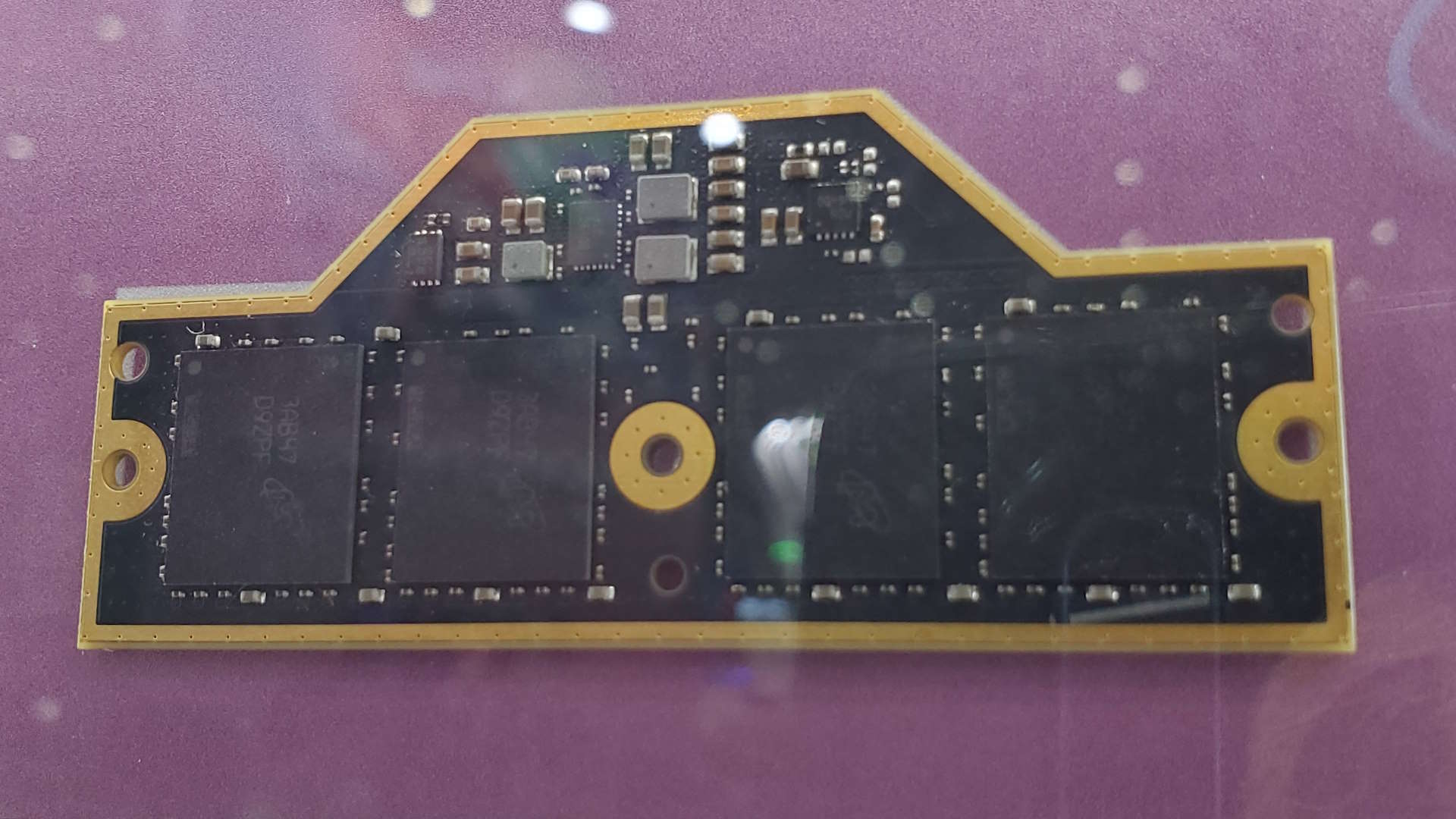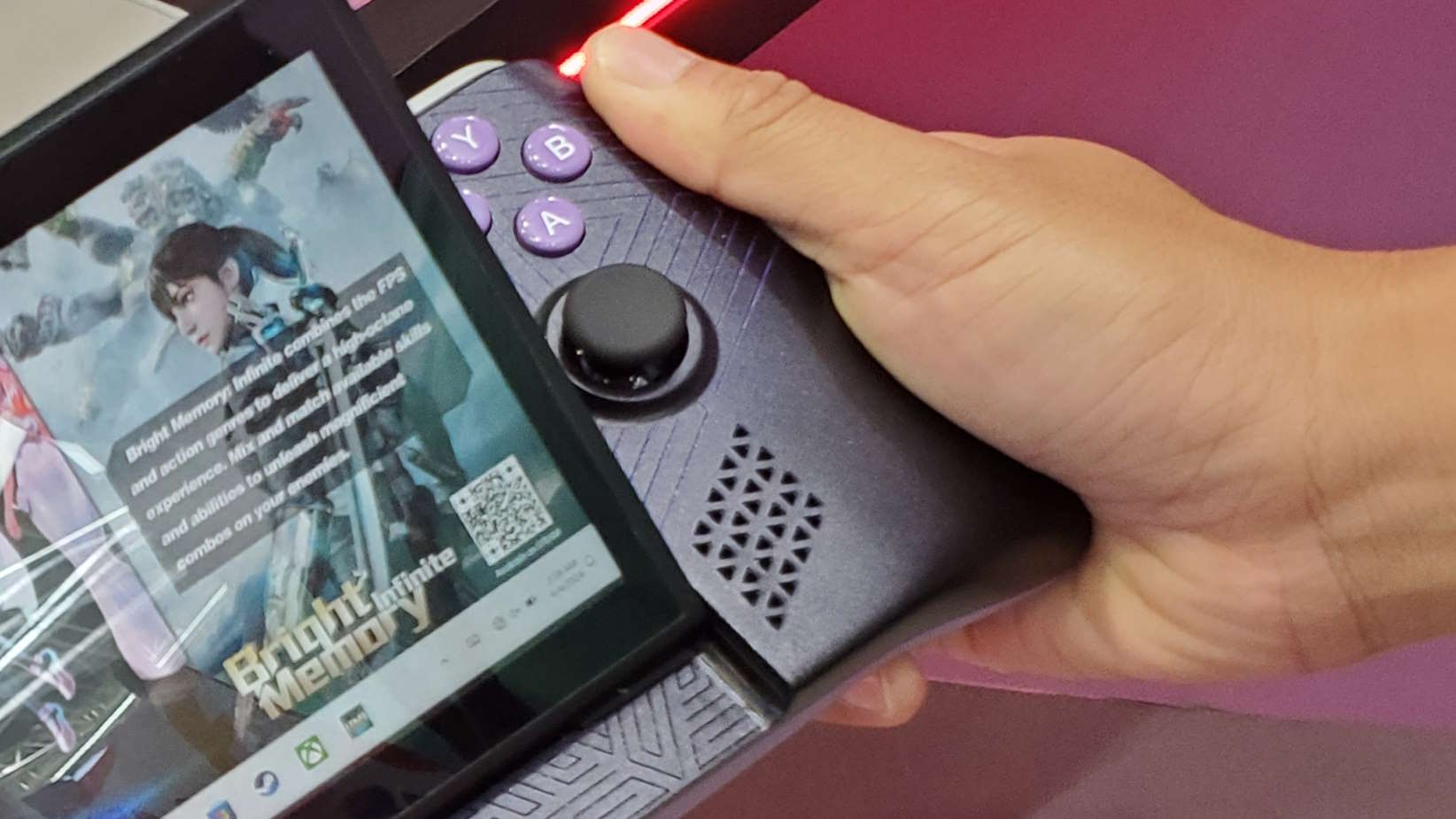
There were a bunch of new handheld gaming PCs floating around the Computex show this year, whether it was newbies such as the Zotac Zone, or companies trying to fix initial mistakes with their first devices, such as the ROG Ally X and MSI Claw 8 AI. But in a twist of almost Shyamalanian proportions it was Adata who actually presented the most interesting handheld of the show.
Now, I'm not going to say it's the best because we've only been shown a couple of prototypes of the Adata Nia so far, and not with necessarily finalised silicon either. But there's a great ethos behind it, some interesting new tech choices, and even some potentially performance-enhancing eye-tracking tricks, too.
But it's also the approach to pricing which is refreshing. I would doubt the Zotac Zone is going to be coming in cheap with its trackpads and OLED screen, and neither the Ally X or MSI Claw 8 AI. But Adata is at least looking for the normalised pricing of the Steam Deck, and trying to keep its own user-price down to $500.
How close it gets, however, is another matter and far from a definite thing at this early stage. Chatting with Luca Di Fiore, Adata's head of product, at the show, he points out that Adata has a bit of an advantage over some of the other handheld PC manufacturers. Outside of the screen and SoC costs, you can shave a fair chunk off the price if you're getting manufacturing pricing on your storage and memory.
And storage and memory are Adata's bread and butter, so the theory is that it should cost it far less to fit out a handheld on that front. It's also getting a bit more technical about it, because, instead of using standard soldered LPDDR5x, Adata has been prototyping boards with LPCAMM2 support.
That's an interesting move, and certainly the first handheld I've heard of to speak about using it. The idea is to provide a level of upgradability that isn't there on most other devices. Which is also why Adata is planning on releasing the CAD documentation around it so people can 3D print different cases and buttons, etc.

It's also a potential component of what Adata is calling a planned second life for the Nia. Something new and shiny in PC hardware will always come along, so these things have a finite shelf life, but instead of just dumping it into the trash, Adata wants people to use them for different afterlife projects.
That's an ambitious goal, and likely will go unfulfilled if one of the requirements is to have a 3D printer, but Adata's hoping to attract enough hackers and modders to make the Nia useful beyond its initial function.
Another way Adata is looking to cut costs is by not shipping Windows with the device; instead it's looking at shipping a SteamOS clone with the device, or SteamOS if it can manage to sweet-talk Valve. So yeah, a SteamOS clone, then...
The Nia is set to come with a 1080p, 120 Hz panel, with a 500 nits peak luminance rating, and is designed to be tilted up on a sliding mechanism. As well as giving a different angle to game at, it also allows more space for airflow behind it, too.
Above the screen is an eye-tracking webcam, which is where the potential performance boost could come from. The on-stand labelling of the Nia at the show definitely didn't mention AMD or foveated rendering in the same sentence, so I've no idea what the eye-tracking could possibly be used for when either a Ryzen 8000-series or later SoC is inside it.
If it were to use foveated rendering however, a technology straight out of performance enhancing VR land, then the assumption is it tracks where your eyes are looking and then significantly reduces the rendering levels in your peripheral vision. To be honest, that's easier done on a headset, because with a little 7-inch screen there's not a lot that's in your periphery when it comes to handheld gaming. Still, if it can boost performance it would be a real feather in the Nia's cap.
In terms of ergonomics the Nia prototypes feel good in the hand, and despite being around 720 g they actually feel a bit lighter. The angle you hold the device at takes some of the pressure off your wrists, and also makes it easier to use the offset thumbsticks.

I prefer that Xbox stick layout, but I've definitely struggled with some handhelds that use it when I'm trying to use the right-hand thumbstick. There's a certain awkward thumb contortion to it that requires a lot of effort—not so in my short time with the Adata Nia. At the moment we're looking at Hall effect sticks, but Adata is also looking at a capacitive technology from an Israeli company which might sneak into the final design.
It's likely to find its way to market in the same manner the likes of Ayaneo and OneXPlayer do, via crowd-funding campaigns in order to more accurately gauge the manufacturing volume that needs to be put in place. Depending on how this stage of testing goes that could happen by the end of the year, or early next.
How successful it ultimately ends up being will come down to how close it can get to its $500 price target, what the actual finish is like on the final product (the prototypes felt like prototype plastic to me), and whether Adata can really pull off an eye-tracking performance boost and genuine customer support for customisation and modding.
It's going to be a tall order, for sure. Adata doesn't have the brand recognition of some of the others, but I'm going to be interested to see how it all rolls out.







